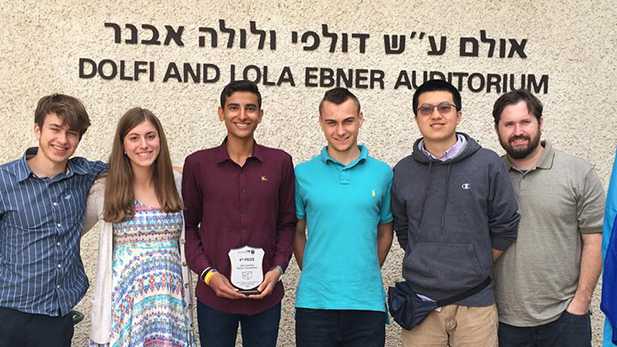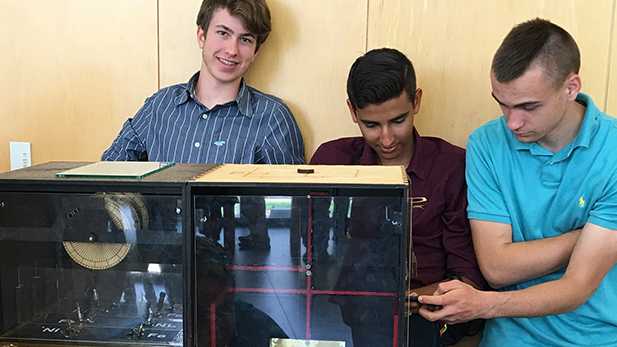 The Gregory School team (from left) Daniel Leighou, Elaine Wright, Jaiveer Katariya, Moritz Gloesslein, Tianyi Zhu and physics teacher Dennis Conner in Rehovot, Israel.
The Gregory School team (from left) Daniel Leighou, Elaine Wright, Jaiveer Katariya, Moritz Gloesslein, Tianyi Zhu and physics teacher Dennis Conner in Rehovot, Israel. Listen:
A team of students from The Gregory School won fourth place at an international physics competition this week.
The Shalhevet Freier Physics Tournament in Rehovot, Israel, included 30 teams. Five were from the United States.
“It just felt amazing, the fact that we had the opportunity to go and represent our school in a different continent, on the other side of the planet," said Jaiveer Katariya, a Gregory School junior. AZPM reached Katariya and his peers in Israel via Skype.
This is the first year The Gregory School competed and they paid their way with grants and money from the Jewish Community Foundation of Southern Arizona.
Students in the competition were judged on how well they could build a safe secured by mechanisms that demonstrate concepts of physics and their ability to crack other teams’ safes.
Preparations began in November, when students started meeting to design and build their safe. They used tools such as a laser cutter to piece together the wood box with metal and magnetic components inside.
“Really, what would happen was we would have the design using the physics concept, we would create it and we would realize that for some reason or another our design didn’t work,” Katariya, said.
The problem solving continued until the final hour before the competition, he said.
 The students' safe had to highlight two physics concepts.The Gregory School focused on magnetic induction and Curie point.
The students' safe had to highlight two physics concepts.The Gregory School focused on magnetic induction and Curie point.
So what was the secret to their safe?
The wooden box had two chambers.
In one, a pendulum with a magnet attached had to be moved with a copper bar to complete a circuit– that shows magnetic induction.
In the second chamber, a string held by magnets secured three rotors. To release the string, a piece of nickel had to be heated to the point where it lost its magnetic property. This temperature is called the Curie point. After that, a rod could be stuck through aligned holes in the rotors and the second circuit completed.
Junior Elaine Wright was the highest ranked woman in the competition. The top three teams from the United Kingdom, Slovenia and Israel were all men. She said the competition reinforced her interest in a career in science, technology, engineering or math.
“I think that was really helpful for me to see that’s something I can do,” Wright said.

By submitting your comments, you hereby give AZPM the right to post your comments and potentially use them in any other form of media operated by this institution.